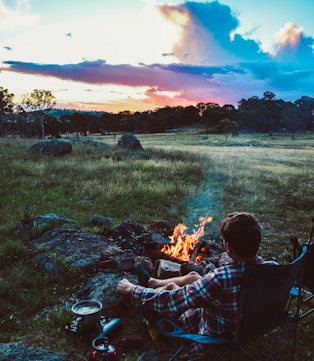Survival Cache
Contents and location
7/8/20233 min read


Survival Supply Cache: Contents and Location
As preppers, it is vital to ensure we have access to critical supplies in an emergency. A supply cache is a hidden storage of gear, food, water and other essential equipment that can stand between you and disaster if you're unable to return home or locate needed resources. Below are some tips for building, and placing, an effective supply cache:
Durable container: Be mindful of your local climate, and choose a container that can withstand exposure to the elements like a plastic or metal drum, bin or box. Ensure an airtight seal to keep moisture and pests at bay. Tossing in some oxygen absorbers wouldn't be a bad idea either. Bury, or hide, your lifeline somewhere sheltered.
Contents: Ideally, your cache should be stocked with non-perishable food, water and basic shelter. Additionally, you'll want to cache items that defend you against the elements. Is it cold? Hot? Wet? Hot and sunny? Some items you'll likely benefit from, regardless of the climate, are space blankets, hand warmers, waterproof matches/lighter, emergency tent. Plan for at least 72 hours of supplies for your family. Rotating supplies is a must, with frequency depending upon the climate. Is your cache above or below ground?
Tools and supplies: Pack a basic survival kit with things like a knife, water filter/purifier, emergency blankets, duct tape, a scotch auger, basic first aid kit, flashlight, batteries, emergency tools, toiletries, wet wipes, sanitation and hygiene products. These are "at minimum" suggestions. Your cache can be as basic, or as elaborate, as you like.
Important documents: Once you have ensured a solid security plan for your cache, which we'll touch base on below, we highly recommend including copies of personal documents like identification, insurance papers, property records, and some cash in small denominations in a waterproof bag, or a small combination lock box.
Strategic location: Bury the cache on your own property in a location that is not easily detected and some distance from your home. Ensure that you can easily and quickly access it. You don't want to have to borrow pawpaw's tractor to dig it up in a "grab and go" scenario. Look for signs of underground utilities before digging to avoid creating more distress. I mean, you don't want to hit underground electric, gas, or water lines. Alternative options include hiding the cache in a secure location you frequent like a storage unit, garage or shed. Hiding in plain sight is a good approach and you should disguise the container to avoid suspicion.
Security: Take measures to ensure your cache remains undisturbed and secure until needed. Bury the container at least 2 to 3 feet underground to avoid detection from animals or people. Camouflage the site to make it appear undisturbed. Booby trapping the site is only suggested if it is a teotwawki scenario, as this becomes a legal issue in the event of accidental discovery. Locking mechanisms can be installed on your cache, but remember, a lock is only to keep an honest person honest.
Maintenance and rotation: Visit your supply cache regularly to rotate perishable items, check for signs of damage or tampering and ensure it remains well-hidden. Your visits should be discreet and we advise never coming and going the same way twice., as paths get worn down and become a method of detection. Update the contents to match current needs, priorities, and seasons. Keep a record of the location and contents in a secure place in case you are unable to access the site.
With adequate planning, a well-stocked supply cache can provide critical resources during an emergency when other options are unavailable. Literally speaking a cache can very well be your lifeline, meaning the difference in life and death.. Thanks for reading. Get prepped!
